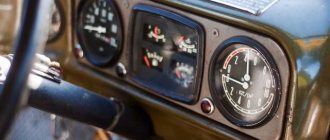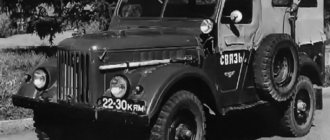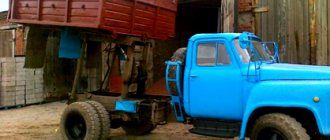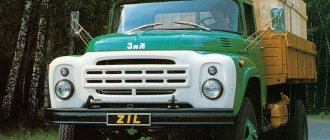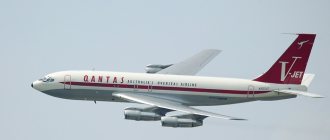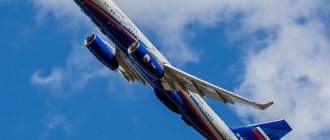From the creation of the first aircraft to the present day, no less than ten thousand different models of airliners, whether military or civil aviation, have been designed and recreated. Constantly arising questions and progressive improvements are embodied in new elegant designs and models, which within a few years occupy their niche in the modern air fleet.
One of the most important tasks of the aircraft industry is the fuel consumption of the aircraft, because the higher it is, the more unprofitable the machine is, which is directly opposite to any market progress. So what is the fuel consumption of an airliner, and what is it like for different aircraft?
Currently, there are three technical indicators of this aircraft parameter:
- Hourly fuel consumption;
- Kilometer fuel consumption;
- Specific fuel consumption.
Boeing Business Jet
To begin with, we will need a large investment in the development of innovative technologies that will allow us to create the transport of the future, with the help of which we could make high-speed travel without refueling for tens of thousands of kilometers. If the flight speed value drops below the Vmin extra mark, then a threat occurs. The value of Vmin extra depends on many constant and variable quantities and is especially critical during the takeoff phase.
Weight of the most popular aircraft
Surely many passengers asked before the flight how much the plane on which they would travel weighed. The impressive appearance of the iron bird makes you think that the weight of the aircraft soaring in the air actually reaches hundreds of tons.
Of course, any aircraft is designed to carry a certain number of passengers, luggage and fuel, so the weight of individual aircraft models can vary significantly.
Each model has a permissible take-off maximum, which consists of the aircraft’s own weight, the weight of the fuel required for the flight, and the weight of passengers with luggage and hand luggage. Given the take-off maximum, airlines set a limit on the number of passengers and luggage they can take.
The restrictions are caused by safety reasons - after all, even a few extra pounds on each passenger can create an emergency situation during the flight. On larger aircraft models, the carry-on and baggage limits are correspondingly higher. Therefore, it would be useful to find out how much the aircraft of the most popular models in commercial aviation weigh.
What do planes fuel? what do planes fly on? Aviation and space
Kamaz-55111: how much it weighs without load, dump truck load capacity in tons, technical characteristics of an onboard 10-ton truck, fuel consumption
Passenger airliners, whether aircraft manufactured by Boeing or Airbus, or domestic aircraft manufactured by Tupolev or Ilyushin, use aviation kerosene. In Russia, kerosene of the TS-1 and RT brands is used. In foreign countries, Jet Fuel A and Jet Fuel A-1 kerosene is used. Such kerosenes are used only in gas turbine engines.
These fuel grades have slightly different characteristics, but can be mixed in any proportions. In winter, a special additive is added to aviation kerosene, which serves to prevent the fuel from freezing. This additive is designated by the letter “I”. This additive also promotes more complete combustion of kerosene and better fluidity at low temperatures.
Light aircraft with piston engines use gasoline as fuel. But such gasoline, unlike automobile gasoline, has a higher octane number. This is necessary to increase the engine power and, accordingly, the torque on its shaft.
In most modern airliners, fuel is located in the wings and a compartment located in the central part of the aircraft. Wing tanks are a cavity filled with sealant. In such a cavity, the fuel is in a free state, flowing inside one tank. The tanks are vented to the atmosphere to prevent collapse when fuel is consumed. In the middle of the aircraft, at the level of the wings, there is a central or supply tank. From it, fuel is taken to the aircraft's engines.
On some modern aircraft, fuel may be located in the tail or stabilizer. This is due to the need to weight the rear of the aircraft to make takeoff easier.
How to calculate the amount of fuel for a flight
The amount of fuel that is filled into an airliner before takeoff is calculated using special formulas that are accessible to a narrow, specialized circle of people and differ depending on the aircraft model.
However, there is an approximate calculation that consists of the following terms:
- The mass of fuel required to fly from point A to point B at a certain payload.
- The amount of fuel that is consumed when flying from point B to the most remote airfield indicated as an alternate in the flight plan.
- The amount of fuel that will be used if the plane makes two additional landing circles.
- And 5% of the total amount of fuel calculated in the previous paragraphs as a reserve.
This video shows fuel being dumped during a flight. This procedure is practiced by some airliner models in emergency situations or before landing (much less frequently).
Kilometer fuel consumption
Kilometer fuel consumption is the amount of fuel consumed per kilometer of flight. It is calculated in the same way as for hourly speed - at cruising speed and at maximum commercial load.
It is worth noting that for cargo and passenger transportation it is much more logical to use this particular calculation, since the main goal of such a flight is to deliver the cargo to the required distance with the least fuel consumption, and not to stay in the air as long as possible, however, it is fixed in the technical characteristics hourly.
Calculated in kg/km.
Which airlines operate Boeing 737
Today, Boeing 737 airliners of various modifications are operated on medium- and short-haul flights by many airlines in 115 countries around the world. This model is in great demand among Russian air carriers.
Aeroflot
A large Russian carrier entered into a contract for the supply of Boeing aircraft to the aviation fleet with a well-known American aircraft manufacturer in 2011. As of 2022, the most popular domestic air carrier operates 42 Boeing 737-800 aircraft, with 5 more units expected to be delivered.
The aircraft are equipped with two-class passenger cabins for 158 people. For those traveling on a business tariff, there are 20 seats in a separate comfortable cabin.
S7 Airlines
The Russian airline S7 Airlines, which carries out passenger transportation on domestic and international routes, operates 21 Boeing 737-800 and 2 airliners of the MAX8 modification. There are 9 more aircraft on order.
The cabins of passenger airliners have a two-class layout. The total number of seats is 176 (8 seats - business class).
Nordwind Airlines
The Russian charter airline Nordwind has 5 Boeing 737-800 modifications in its fleet. A single economy class cabin accommodates 189 passengers.
Victory
The Russian budget company Pobeda, a subsidiary of Aeroflot, operates 23 Boeing 737-800 on its routes with a capacity of 189 passengers. These are all aircraft available in the fleet of a given carrier. The air fleet will soon be replenished with 7 more aircraft of this modification. Also on order are 20 Boeing 737MAX8 versions.
Flydubai
The UAE state budget airline has 51 Boeing 737-800 aircraft, 10 737 MAX 8 aircraft and 2 737 MAX 9 aircraft.
The cabin of the base model is configured for one class of service with a capacity for 189 people. There are also two-class aircraft designed to carry 174 passengers.
The fourth generation Boeings are equipped with comfortable two-class cabins with 166 and 172 seats.
The carrier Flydubai has 121 Boeing 737 MAX 8, 68 - MAX 9 and 50 MAX 10 units on order.
UTair
The Russian carrier UTair operates 9 Boeing 737-800. The salons are arranged in one and two classes of service. Passenger capacity – 159/186 people.
Royal Flight
The Russian charter airline Royal Flight has 2 Boeing 737-800 in its fleet. The cabins are arranged in one economy class of service with a capacity of 189 seats.
Azur Air
The domestic air carrier Azur Air operates 6 aircraft of the 737-800 modification on its airlines. The 1st class cabin accommodates 189 passengers.
Belavia
The Belarusian airline Belavia maintains in its aviation fleet 7 Boeing 737-300 (single-class for 189 people), 6 airliners 737-500 (two-class cabins for 120/123 and 148 people) and 5 aircraft 737-800 (single-class cabin for 189 people) . The order includes 4 Boeing MAX8 modifications.
Russia
Rossiya Airlines operates 16 737-800 aircraft. The salons are configured for 1st and 2nd class service. The total number of seats is 168/189.
Nordavia
The Russian carrier Nordavia, based in Arkhangelsk, operates 9 Boeing 737-500 (single-class cabins for 132/135 passengers) and 2 airliners 737-700 (1 class of service, accommodating 148 people). There are 2 B737-800 aircraft on order.
NordStar
The Russian airline NordStar (Taimyr) maintains 9 Boeing 737-800 aircraft in its fleet. Two-class cabin layout for 180 people. One Boeing 737-300 modification with an economy class passenger cabin for 148 people will also be used.
Pegasus Fly
The Russian carrier Pegas Fly has 4 Boeing 737-800 modifications in its fleet. Single-class cabin for 189 passengers.
Turkish Airlines
Turkey's major flag carrier operates 105 Boeing 737-800s on its routes. The cabin is arranged into 2 classes of service. The total number of seats is 165.
The aviation fleet also includes Boeing 737-700 (1 aircraft with a capacity of 149 people in an economy class cabin) and a modification of the 737-900ER (15 aircraft, two-class cabins for 159 people).
Turkish Airlines has an order for 65 Boeing 737 MAX 8 aircraft and 10 737 MAX 9 aircraft.
The popularity of the Boeing 737 line is fully justified by the high level of reliability, efficiency, safety and maximum comfort for passengers. B737s of various modifications occupy the vast majority of the aircraft fleets of many global carriers.
List of airliner models and their fuel consumption
- An-2: specific fuel consumption – 42 g/passenger-km, hourly fuel consumption – 0.131 thousand kg/h;
- An-140-100: 24.4 g/pass.-km, 0.55 thousand kg/h;
- An-38-100: 43.7 g/pass.-km, 0.38 thousand kg/h;
- An-24: 36.0 g/pass.-km, 0.86 thousand kg/h;
- IL-86: 34.5 g/pass.-km, 10.4 thousand kg/h;
- Il-96-300: 26.4 g/pass.-km, 7.8 thousand kg/h;
- IL-114-100: 20.8 g/pass.-km, 0.59 thousand kg/h;
- Yak-40: 79.4 g/pass.-km, 1.241 thousand kg/h;
- Yak-42D: 35.0 g/pass.-km, 3.1 thousand kg/h;
- Tu-104B: 75 g/pass.-km, 6 thousand kg/h;
- Tu-134A: 45.0 g/pass.-km, 3.2 thousand kg/h;
- Tu-154M: 31.0 g/pass. Km, 5.3 thousand kg/h;
- Tu-204-300: 27.0 g/pass.-km, 3.25 thousand kg/h;
- Tu-214: 19.0 g/pass.-km, 3.7 thousand kg/h;
- Tu-334: 23.4 g/pass.-km, 1.7 thousand kg/h;
- Tu-144S: 230.0 g/pass.-km, 39 thousand kg/h;
- Boeing 707-320: hourly fuel consumption – up to 7.2 thousand kg/h;
- Boeing 717-200: 2.2 thousand kg/h;
- Boeing 727-200: 4.3 thousand kg/h;
- Boeing 737-300: fuel efficiency – 22.5 g/passenger-km, hourly fuel consumption – 2.4 thousand kg/h;
- Boeing 737-400: 20.9 g/pass.-km, 2.6 thousand kg/h;
- Boeing 747-300: 22.4 g/pass.-km, 11.3 thousand kg/h;
- Boeing 757-200: 23.4 g/pass.-km; 3.25 thousand kg/h;
- McDonnell Douglas MD-83: hourly fuel consumption – 3.1 thousand kg/h;
- McDonnell Douglas MD-90: 2.65 thousand kg/h;
- Airbus A320-200: fuel efficiency – 19.1 g/passenger-km, hourly fuel consumption – 2.5 thousand kg/h;
- Airbus A321-100:— 23.2 g/pass.-km, 2.885 thousand kg/h;
- Airbus A380: specific fuel consumption – 2.9 per passenger and 100 km of travel, hourly fuel consumption – up to 13 thousand kg/h;
- Fokker 50: hourly fuel consumption - 0.64 thousand kg/h;
- Embraer EMB-120ER: fuel efficiency - 27.6 g/passenger-km, hourly fuel consumption - 0.39 thousand kg;
- Bombardier CRJ 200: 35.9 g/pass.-km, 1.1 thousand kg/h;
- Sukhoi Superjet 100: fuel consumption per hour - 1.7 thousand kg/h;
- MS-21-300: specific fuel consumption –15.1 g/pass.km;
- MS-21-400: 15.1 g/pass.km;
- Concorde: hourly fuel consumption – 20.5 thousand kg/h;
- Avro Canada C102: specific fuel consumption – 109 g/pass.-km, hourly 2.7 thousand kg/h;
- Vickers Vanguard: hourly fuel consumption – 2.1 thousand kg/h;
- Bristol Britannia 314: 2.2 thousand kg/h;
- De Havilland Comet 4B: 5.2 thousand kg/h;
- Breguet 941: 1.2 thousand kg/h;
- Hawker-Siddeley Trident 3B: 4.65 thousand kg/h;
- BAC One-Eleven 475: 2.3 thousand kg/h;
- Sud-Aviation Caravelle 11R: 2.6 thousand kg/h;
- Dassault Mercure: 2.8 thousand kg/h;
- Convair 990A: 5.8 thousand kg/h.
Place of production... What is fueled with kerosene
| How much does a plane weigh - the weight of popular passenger planes? The 737-400 model, due to the enlarged cabin, has changed the internal air conditioning system and added a second pair of emergency exits in the wing area. 3-class configuration 416 2-class configuration 524 maximum 660 Geometric characteristics Aircraft length, m 70.6 Wingspan, m 64.4 Aircraft height, m 19.4 Wing area, m 2 524.9 Wing sweep angle along the line 1 4 chords 37.5 o Fuselage diameter, m 6.5 Passenger cabin dimensions, m m 3 length 57 maximum width 6.13 maximum height 2.54 volume 885.4 Maximum weight, kg takeoff 396890 landing 285770 Empty curb weight, kg 181620 Aircraft weight without fuel, kg 242680 Commercial load, kg 62.87 Commercial cargo volume lower deck, m 3 30 LD-1 containers 170.5 5 cargo pallets, 14 LD-1 containers additional. |
Foreign aircraft • A 3500 kg h A B B-2 6200 kg h M 5500 kg h.
Where are the tanks on the plane: Modifications of the Boeing 737
There are an automated aircraft navigation system FMS and an inertial navigation system IRS, developed by Honeywell and Sperry, as well as a DADC central computer for direct diagnosis of on-board systems in flight. Its purpose is to determine the minimum refueling of a helicopter to perform a flight mission, and if the fuel refueling is known, to determine the expected remaining fuel after landing and the flight time reserve.
| Description | ||
| Developer | Boeing | |
| Designation | Boeing 747-400 | |
| Type | Long-haul, high-capacity passenger aircraft | |
| First flight | April 29, 1988 | |
| Crew, people | 2 | |
| Number of passengers, people | 3 class configuration | 416 |
| 2-class configuration | 524 | |
| maximum | 660 | |
| Geometric characteristics | ||
| Aircraft length, m | 70,6 | |
| Wingspan, m | 64,4 | |
| Aircraft height, m | 19,4 | |
| Wing area, m2 | 524,9 | |
| Wing sweep angle along the 1/4 chord line | 37.5 o | |
| Fuselage diameter, m | 6,5 | |
| Passenger cabin dimensions, m (m 3 ) | length | 57 |
| maximum width | 6,13 | |
| maximum height | 2,54 | |
| volume | (885,4) | |
| Maximum weight, kg | takeoff | 396890 |
| landing | 285770 | |
| Empty weight, kg | 181620 | |
| Aircraft weight without fuel, kg | 242680 | |
| Commercial load, kg | 62,87 | |
| Commercial cargo volume (lower deck), m 3 | 30 containers LD-1 | 170,5 |
| 5 cargo pallets, 14 LD-1 containers + extra. volume | 150,9 | |
| Fuel capacity, l | typical | 204340 |
| maximum | 216840 | |
| Power point | ||
| Number of engines | 4 | |
| engine's type | DTRD Pratt & Whitney PW4062 | |
| Engine thrust, kgf | 4 x 28710 | |
| Flight data | ||
| Speed, km/h (M=) | cruising at an altitude of 10600 m | 910 (0,85) |
| maximum | 942 | |
| Practical ceiling, m | 10700 | |
| Flight range (with fuel reserves), km | with maximum fuel reserve | 13570 |
| flight range with 400 passengers and luggage | 11000 | |
| Required runway length (ISA conditions, at sea level), m | 3350 | |
Notes
- Here and below, data is given for the attack Su-28K (also designated Su-27KSh) “Groza” as of the project in 1975; The Su-27K (otherwise known as Su-27KI) and Su-29K Molniya fighters, while their design was generally unified with the Su-27KSh, had significant differences in details, including the crew composition (Su-27KI, for example , designed single-seat) and weapons.
- The two-seat versions were the Su-28K (Su-27KSh) "Groza" and the Su-28KRTS (Su-27KRTS) "Vympel"; The Su-27K/27KI and Su-29K Molniya fighters were designed as single-seat fighters.
- Air-to-ground and anti-ship missiles could only be used by the Su-28K (Su-27KSh) “Groza” attack aircraft; The Su-27K/27KI and Su-29K Molniya fighters were designed only for air combat missiles.
- At the end of the 1970s, the PFI T-10 project was significantly redesigned (receiving the designation T-10S), and in 1984 it was adopted by the USSR Air Force and Air Defense Forces under the designation Su-27. In fact, the T-10S is already a different aircraft, bearing little resemblance to the early T-10 even in appearance.
- Here “VPK” means “military-industrial commission” (in full – the Commission of the Presidium of the Council of Ministers of the USSR on military-industrial issues).
- After the death of General Designer P. O. Sukhoi in 1975, this experimental design bureau was named after him.
- Subsequently, the designation “Su-28” was assigned to a training aircraft based on the Su-25 attack aircraft.
- Subsequently, the designation “Su-29” was assigned to a two-seat aerobatic training aircraft based on the single-seat sports Su-26.
- When aircraft of a single family are in service instead of many types, this simplifies both the recruitment of air groups and the supply of spare parts for them, as well as the training of pilots. That is, all other things being equal, the costs of maintaining an aircraft fleet are lower.
- The “Molniya” code for this project came from the MiG-23A fighter, which the Sukhoi Design Bureau was supposed to replace.
- Chief designer Mikhail Simonov said that on the T-10S, only the pilot’s ejection seat and landing gear wheels remained the same from the T-10.
- First the T-10-3 copy, later T-10-15 and T-10-20 were added to it.
- The brake flaps in front of the landing gear niches were made on the model of the MiG-31 heavy interceptor, and in this form they appeared on the T-10 experimental aircraft (including the T-10-3, which was tested on takeoffs from a springboard and landings with a brake hook ). Later, during the redesign of the aircraft in 1979, the brake flap was again returned to the upper surface of the fuselage - that is where it is located on the production Su-27 and Su-33 aircraft.
- When the aircraft was redesigned in 1979-1980, the shape of the wing, among other things, was changed - on the production Su-27 and all aircraft based on it (including the carrier-based Su-33), it received straight edges and end beams instead of rounded tips.
- Similar to the MiG-31 heavy interceptor; Subsequently, the Su-34 front-line bomber, recently adopted by the Russian Air Force, received such main supports.
- "Kaira" was then developed to arm the latest attack aircraft - the MiG-27K fighter-bomber and the Su-24 front-line bomber.
Types of aviation fuel
The type of fuel a plane flies on depends on its characteristics. In total, two types are used: jet kerosene or aviation gasoline. In most cases, kerosene, also called jet fuel, is used.
Jet fuel
Airplanes are fueled with special kerosene, which is a liquid fraction obtained by distillation from low-sulfur and sulfur types of oil. The composition may contain a certain amount of gasoline elements.
Russian aviation kerosene comes in several types. For subsonic passenger airliners, T-1, TS-1 or T-2 is used. More technically advanced supersonic aircraft require heavy fuel. These include: T-6 and T-8V. There is also RT fuel, used for Su-27, Tu-22 and some other aircraft.
Aviation gasoline
The second fuel for aircraft is aviation gasoline. It is used for highly loaded piston internal combustion engines. During production, it is obtained from direct distillation of oil with or without the addition of high-quality components and additives. The main qualities of gasoline are: detonation resistance, fractional composition and chemical stability.
The last ones used in Russia were the B-91/115 and B-95/130. Now they have been abandoned, giving preference to AI-95 motor gasoline. It is used for light aircraft. B-70 is also occasionally used, but only as a solvent during maintenance.
Special additives for aviation fuel
The properties of aviation fuel can be improved using special additives. They can eliminate the negative influence of external conditions, stabilize engine operation and increase the service life of the aircraft.
Additive options:
- antistatic – increases the electrical conductivity of the fuel, reducing the accumulation of static electricity, which could lead to an explosion;
- anti-water crystallization - helps prevent the formation of water crystals that clog fuel filters, causing engines to stop;
- antioxidant - compensate for reduced chemical stability, preventing possible oxidation;
- anti-wear – restores the anti-wear properties of the fuel, which are reduced during hydrotreating.
The ability to use fuel with additives depends on the specific aircraft model and the engine installed in it. In some cases, it is preferable to use standard fuel options without additives.
How much does jet fuel cost and one refueling of an aircraft?
A popular high-quality fuel produced in Russia is called TS-1. It is often used to refuel passenger aircraft. The average price is about 50,000 rubles per ton. Some regions sell it at a higher price. For example, in Kamchatka you can buy a ton for only 80,000 rubles.
The cost of one aircraft refueling depends on the flight range and the volume of fuel tanks. When flying a Boeing 737 from Moscow to St. Petersburg, fuel costs will be about 150,000 rubles. The Soviet Yak-40 will perform the same flight at a cost of about 450,000 rubles, since it consumes much more.
Specific fuel consumption
Specific fuel consumption is the amount of fuel consumed per unit of time or distance, relative to the power or thrust of the aircraft provided by a particular engine, etc.
There are several different units of calculation, depending on the choice of parameters:
- Mass or volume of fuel – gram, kilogram or liter (g, kg or l);
- Travel time or distance – hour or kilometer (h or km);
- Engine power or thrust - horsepower or kilogram-force (hp or kgf).
The result is, for example, g (hp h) or kg (kgf h).
In civil aviation, another calculation has also been established - the weight of fuel spent per kilometer of travel to the total number of passengers on the plane. Its unit of calculation is g/passenger-km (grams per passenger-kilometer).
This technical indicator works closely with fuel efficiency, helping to indicate the most profitable airliner for transporting a given number of passengers, while using the minimum amount of fuel.
747—400
Transaero airline has eleven airliners, six B747-200, three B747-300 and two B747-400, AirBridgeCargo airline, part of the Volga-Dnepr group of companies, has seven aircraft in the cargo version, three Boeing 747-200F, one B747-300F and three 747,400 ERF. In 1971, Boeing released a modification of the 747-200, which differed from the base model in more powerful and reliable engines, as well as increased take-off weight.
Technical specifications Technical specifications
| Boeing 747-400 To the results obtained, it is necessary to add another five percent of the fuel that will be used if the plane was unable to land the first time. After completing a flight, flight attendants carefully check the main instruments of the vehicle, which helps minimize the risk of an accident on the next flight. |
- ease of takeoff, climb, landing;
- high load capacity;
- reliability and long service life;
- low maintenance costs;
- comfortable, well-equipped interior.


